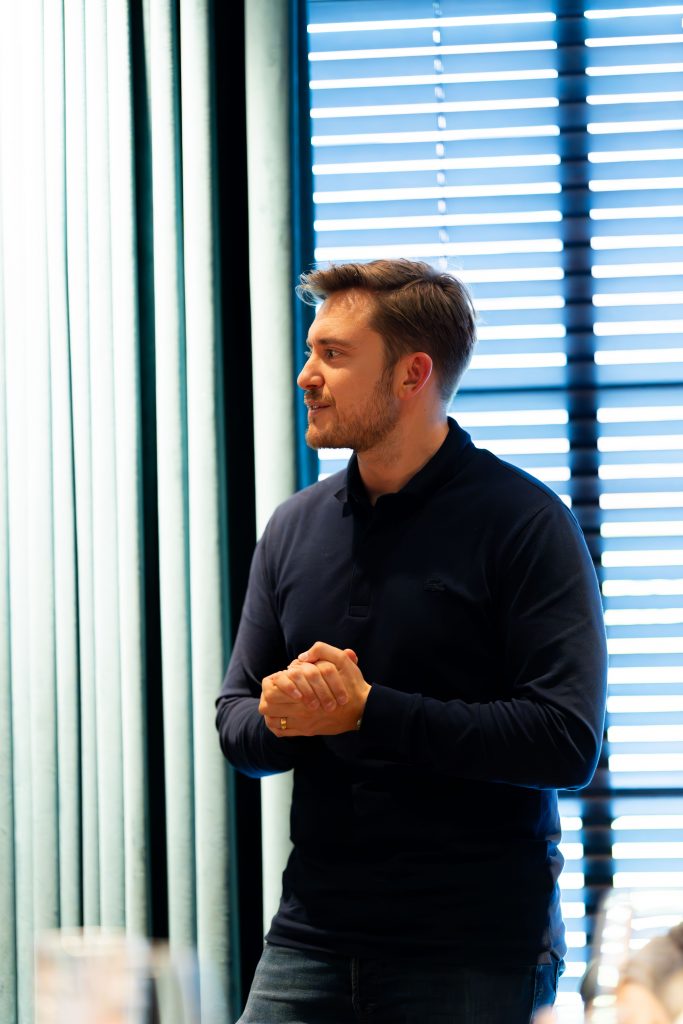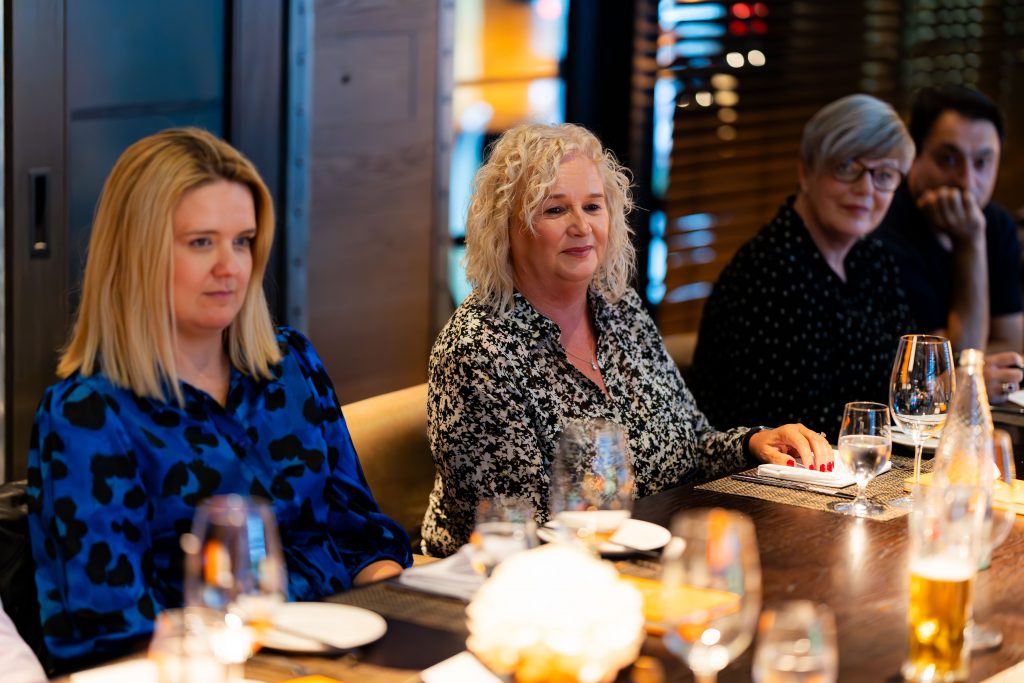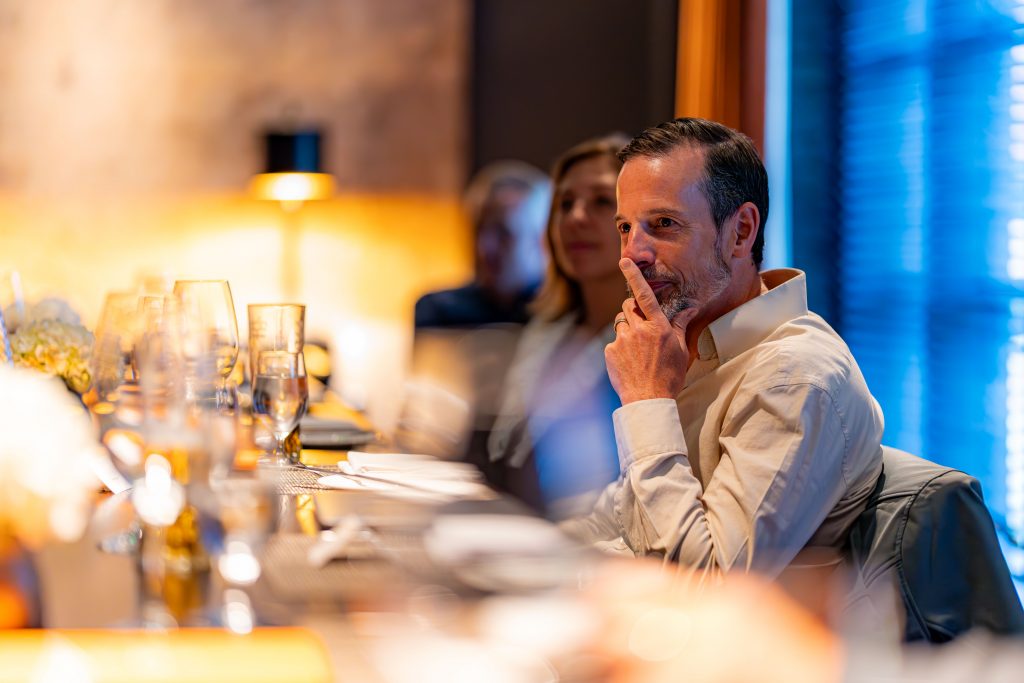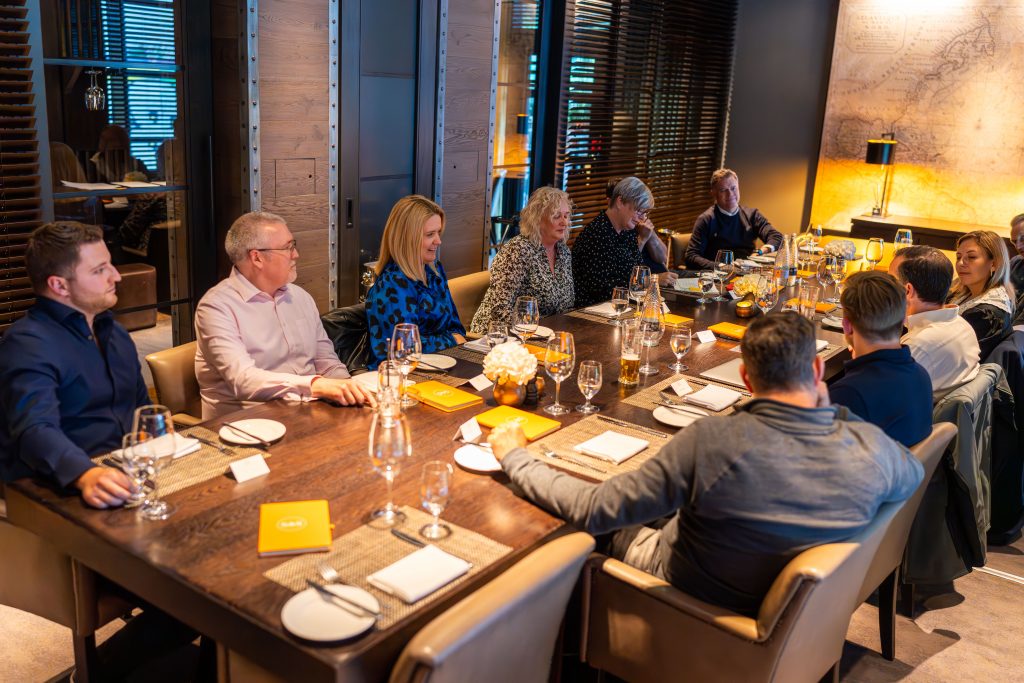In today’s rapidly evolving business landscape, change is inevitable, necessary and demanding, in many cases a strategic imperative for growth and success. As a result, leaders need to embrace change, lead the change and consciously ‘be the change’ enabling the organisation and more importantly the workforce to adopt and embed the change effectively.
Many change initiatives fall short of their intended outcomes due to a lack of consideration for the people involved, yet we often hear CEO’s cite culture and people change as the cornerstone of any transformation programme.
We have all read the McKinsey statistics and are all no doubt tired of hearing the words “70% of digital transformations fail”. Could it be that embracing a humanistic approach to change is what is missing within your complex and business wide transformation programme?
Recently, we organised a Summer CxO Dinner at Dakota in Manchester, which was led by the inspiring and thought provoking Jane Bates. Jane boasts over 30 years of experience in strategy creation and designing, leading and delivering complex change involving thousands of colleagues and multiple geographic locations. The event brought together a selection of C-Suite and transformational leaders from some of the best-known brands in the UK. The main focus of the gathering was to delve into the concept of humanistic change and emphasise the importance of prioritising people at the heart of any change initiative, regardless of its complexity. Amidst this insightful discussion, attendees savoured a delightful three-course meal, engaged in the conversation and had a chance to offer up their thoughts and share best practice too.
In this blog we look to unpack what we learnt and the steps we can collectively take to drive effective change and deliver faster sustained results.

Jane Bates, Strategy & Transformation Consultant speaks at the CxO Dinner in Manchetser
Rules of engagement are shifting and so too is the challenge
Being a leader of people is a privilege and comes with responsibility. As change leaders, our responsibility is amplified, we need to be ‘conscious’ about the role we are undertaking and the difference we can choose to make, and we need to be mindful about how the rules of engagement are shifting.
In our post-Covid society, there is a traumatised population facing higher levels of poor mental health, increased anxiety, and unfortunately, a rise in suicide rates.
The pandemic has prompted a significant shift in people’s motivations for work. Beyond job satisfaction & financial stability, individuals now seek purpose and meaning and a work life balance that will help them maintain physical and mental well being. They are re-evaluating the role their jobs play in this as they look to take more control of their lives.
Flexible working is now normal and people have more effectively integrated their work and their lives, but we still see increasing levels of tension between employees and employers on where the work should be done.
Recent statistics from Gallup’s State of Global Workplace: 2023 Report make for challenging reading. Only 13% of our teams and businesses are engaged with 15% now considered as “loud quitters”.
Daily negative emotions are also shifting with 39% saying they feel stressed and 14% feeling angry. Perhaps most worrying to note is those who are operating in a hybrid setting are seeing stress levels almost double with burnout on the rise, with 78% of workers confirming they are experiencing this phenomenon and 51% confirming this increase in stress is having an effect on family life.
Was burnout even a thing before Covid or did we just not recognise it? Have we all become increasingly connected with how we are feeling and more confident to vocalise it or is our new context of hybrid working and never switching off having a damaging effect on our productivity and ability to switch off? I rarely, if ever, recall feeling burnt out pre-covid.

Jonathan Potter, Managing Director – UK North, Sullivan & Stanley
The challenges of driving successful change is then compounded by the ever-growing generational gap of our teams and business. People are working longer than ever before and we now often see up to 5x generations from Gen X through to Gen Alpha working together in large organisations, however each generation has a different belief system and attitude to work that, if not managed well, could be extremely disruptive. We therefore run the risk of not creating an environment where everyone belongs, but an environment for tension and judgement – two things never helpful to successful outcomes.
Now, layer on top a significant change in strategy, process or technology – perhaps the second or third in as many years – into an unsettled workforce and imagine the results. Our people are change-weary and suddenly the statistic that “70% of transformations fail” doesn’t feel unbelievable, it’s totally plausible and we need to think differently and approach change differently to get different results.
We need a higher consciousness to bring more intentional and purposeful action
Businesses who have a happy and engaged workforce are 29% more profitable and therefore are more likely to deliver their strategy and WOW their customers. They are more likely to transform.
Given we understand this, what are the tools and techniques a modern day leader needs to draw on to bring an increased human approach to driving change?
Here are the top 8 tools and techniques from Jane’s toolkit:
1. Lead with our hearts not our heads
Empathy is the cornerstone of the humanistic approach to change. To drive meaningful and lasting transformation, leaders must cultivate empathy within themselves and their teams using active listening, understanding others’ perspectives, and embracing diversity and inclusion. By fostering an empathetic culture, organisations can build trust, create strong relationships, and enhance collaboration, ultimately helping to drive successful change initiatives.

2. Co-create a vision with your people
A clear and compelling vision is crucial for driving change effectively. However, to win hearts and minds, leaders should avoid the temptation to take a top-down approach. Instead, they should define “the why”, lay the foundations and guardrails and then co-create the vision and purpose with their people. This elicits a sense of belonging, a sense of ownership and when people feel like they belong, it increases alignment. Increased alignment brings purpose and action with a whole team pulling in the same direction with increased chances of embracing change and working towards its realisation.
3. Bring storytelling into your toolkit
When listening to a story, our brains become more engaged and active. We visualise the characters and settings, making the experience more immersive and enjoyable.
Storytelling should be practised by every great leader. Barack Obama is widely recognised for his exceptional storytelling abilities, which through his career helped him connect with people on an emotional level in a way not many leaders have been able to replicate.
Stories therefore have the ability to evoke empathy and create a sense of belonging, two emotions we have identified that are key to winning hearts and minds and effectively getting people behind an idea.
A great book to get you started is called Lead With a Story by Paul Smith.

4. Create the environment for change and nail your approach to hybrid
The office of the future needs to be re-imagined for our new context. A place we come to collaborate, innovate, share ideas and solve problems, not to come and “work”.
As we have already discussed, our working lives have shifted post-Covid, remote work arrangements during the pandemic have highlighted the importance of flexibility.
Employees now seek employers who offer flexible work hours, remote work options, and the ability to balance their professional and personal lives effectively.
A healthy work-life balance is seen as crucial for maintaining well-being and productivity, however many organisations are still unclear about their stance or have resorted to dictating everyone must now come in, without a purpose or reason for why.
Human connection is critical to building a culture of accountability, high performance and trust. We can’t do that from behind a screen everyday, nor is it productive to commute to work to sit in an office when we could be more effective at home.
Businesses need to think about the when and the why, communicate the need to come together, and then trust their people to do the right thing, giving them the freedom to define when, where and how they deliver their objectives.
5. Learn to bring a new balance of masculine and feminine energy
Balancing masculine and feminine energy allows leaders to create an empowering environment where team members feel valued, heard and supported. This fosters a sense of ownership and motivation, leading to increased engagement and productivity.
The importance of leaders balancing masculine and feminine energy to lead change lies in creating a more inclusive, adaptive and effective leadership style. By integrating both sets of qualities, leaders can foster a harmonious and empowering environment for their teams and businesses, unlocking greater potential and better results.
For example, being assertive sets clear expectations and direction (masculine). When you combine this with empathy and active listening skills to understand a member of your team’s concerns (feminine), you are more effectively ensuring you are capturing hearts and minds whilst creating urgency.
People need a blend of both masculine and feminine energy to drive the best results.
6. Lead with transparency and promote a culture of radical candour
A common mistake by leaders driving change is not ensuring there is transparency with messaging and clarity on the impacts change will have, leaving room for rumour.
Early into any any change programme, bring the change to the people with a workshop to voice “the 50 reasons why it wont work” . Getting the concerns and worries out ensures you have an opportunity to lean in and address any fears and worries, as well as raising some real issues you need to consider.
7. You hired great people, don’t take them for fools
We hire exceptional talent and give them accountability to deliver, but leaders often take their teams for fools by not ensuring the messaging is clear around the exact benefit you seek to achieve. This is often because the truth will be painful. It could result in redundancies and the Board doesn’t want to create noise or disruption.
To ensure a successful transformation programme that delivers multi-million-pound benefits to the business and allows it to gain market share, it is essential to openly discuss any issues, like the potential displacement of some roles for example, and develop a comprehensive plan and narrative to address this..
Transparency builds trust and trust enables alignment on purpose and objectives. Build this up from the right foundations and your change has a chance of success, however there are some clear considerations organisations need to make.
If jobs are at risk and redundancies around the corner, ensure you look after people on the way out as much as you did on their way in. This sends a clear message to your people that they are valued and no matter what happens, they will be looked after -Build this into your change programme and cost it in as part of your business case and help those displaced develop new skills within the organisation.

8. Bring the change to the people – a real story
In the early noughties, Jane Bates was given the task of designing and leading the “Living Service” programme to support a large UK retailer relaunch its customer and brand proposition. The Board had decided that fantastic customer service needed to be a competitive advantage and it was crucial that all customers received a consistent high level of service no matter which channel they interacted with.
The change had to engage 100,000 colleagues, working across 3,500 different locations, spanning retail, telecoms, mobile and online. The programme was complex with many workstreams, but the philosophy throughout the two years of design to execution that sat behind the change was pretty simple and included successfully deploying many of the tools and tactics above to help land the change effectively.
A significant starting point was helping the C-Suite leadership team to walk in the shoes of their customers, to truly understand the reality of the customer shopping experience and the colleague working experience, to understand the scale of the cultural change that would need to be achieved whilst driving change to policy and ways of working. By doing this, the sponsorship and investment was there to really make a difference.
The next thing was to ensure the experience for customers and colleagues was driven by the company values, values that were redefined in such a way – with colleagues – that everyone in the organisation could grasp them in the context of their day jobs. Language was simplified from “management speak” to that of the everyday person.
Jane worked with leaders to ensure the principles that sit behind service leadership were adopted, and the whole organisation was reorientated to support those at the frontline directly serving customers.
Jane and her team set about co-creating an environment in every location with leaders and “firelighters” where people could bring their best selves to work. This ensured the basics were fixed and each location given a budget to ensure they had the right tools and capability to do their jobs well.
Everyone was developed and involved in workshops that helped them understand that ‘choosing their attitude’ was within their gift and that feeling liberated and empowered was the place great service is delivered from… in short Jane and the team connected with people’s hearts as well as their minds. The results were staggering , as an organisation it became No.1 in the UK , enjoyed sustained double-digit growth, sickness and attrition levels fell well below industry norms and colleague engagement and customer satisfaction went through the roof. A truly sustainable change facilitated through a passion-driven human-centric approach.
Put people first
To conclude, driving change with a humanistic approach is not a one-size-fits-all solution but a journey of understanding, growth, and empowerment.
By putting people at the heart of change initiatives, leaders can create a workplace where employees feel valued, motivated and inspired to bring their best selves to work and as a result do their best work.
The humanistic approach emphasises empathy, shared purpose, storytelling, continuous learning, and recognising progress, fostering a culture of trust and collaboration that enables successful and sustainable change.
Embracing the humanistic approach not only drives transformative change within an organisation but also has a profound impact on the well-being and happiness of its people.
As change leaders we are privileged and have responsibility. Let us strive to lead change with compassion, understanding, and a focus on human potential, making the world a better place for everyone involved.
Accept the cookies to watch the video.
Ready to make a change?
If you’re ready to embark on a transformative journey and embrace the humanistic approach to change, connect with Sullivan & Stanley today. Our experienced team is here to guide you through the tools, techniques and strategies to drive successful change that empowers your organisation and puts people first.





































































